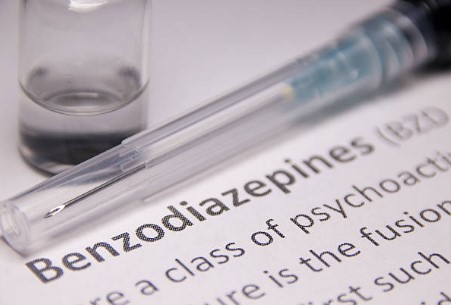Research chemicals, also known as designer drugs or experimental chemicals, are substances that are used for scientific research purposes. These chemicals are not intended for human consumption and are often used in laboratory settings for various experiments and studies.
In recent years, there has been a growing interest in research chemicals, with many individuals and organizations seeking to obtain them for their own research purposes. However, it is important to understand the potential hazards and safety protocols associated with handling these chemicals.
In this beginner’s guide, we will cover everything you need to know about research chemicals, from what they are to how to safely use them in a laboratory setting.
What Are Research Chemicals?
Research chemicals are substances that are used for scientific research purposes. They are often created in a laboratory and are not intended for human consumption. These chemicals are typically used in experiments and studies to better understand their properties and potential uses.
Some common types of research chemicals include:
- Synthetic cannabinoids
- Synthetic cathinones
- Phenethylamines
- Tryptamines
- Benzodiazepines
- Dissociatives
- Stimulants
- Opioids
These chemicals are often sold online and are not regulated by the government, making them easily accessible to researchers and individuals alike.
Potential Hazards of Research Chemicals
by Tom Claes (https://unsplash.com/@tomspentys)
Research chemicals can be hazardous if not handled properly. They may have unknown effects on the body and can be toxic if ingested or inhaled. Some chemicals may also be flammable or explosive, making them potentially dangerous if not handled with care.
It is important to note that research chemicals are not intended for human consumption and should only be used in a controlled laboratory setting by trained professionals.
Safety Guidelines for Handling Research Chemicals
When working with research chemicals, it is crucial to follow safety guidelines to ensure the well-being of yourself and those around you. Here are some important safety protocols to keep in mind when handling research chemicals:
Familiarize Yourself with the Chemical
Before handling any research chemical, it is important to familiarize yourself with its properties and potential hazards. Read the safety data sheet (SDS) provided by the manufacturer and understand the proper handling and storage procedures.
Wear Appropriate Protective Gear
by JESHOOTS.COM (https://unsplash.com/@jeshoots)
When handling research chemicals, it is important to wear appropriate protective gear to prevent exposure to the chemicals. This may include gloves, goggles, lab coats, and respirators, depending on the type of chemical being used.
Use Proper Lab Equipment
Using the right lab equipment is crucial when working with research chemicals. Make sure to use equipment that is specifically designed for handling hazardous materials and follow proper procedures for handling and disposing of the chemicals.
Follow Safety Protocols
It is important to follow safety protocols when handling research chemicals. This includes properly labeling all containers, using caution when mixing chemicals, and following proper disposal procedures.
Have an Emergency Plan in Place
In case of an accident or exposure to a research chemical, it is important to have an emergency plan in place. This may include having a first aid kit on hand, knowing the location of emergency showers and eyewash stations, and having the contact information for emergency services readily available.
Safety Precautions for Working with Research Chemicals
In addition to following safety guidelines, there are also some general safety precautions to keep in mind when working with research chemicals:
Never Work Alone
by National Cancer Institute (https://unsplash.com/@nci)
It is important to never work alone when handling research chemicals. Always have a colleague or lab partner present in case of an emergency.
Keep a Clean and Organized Workspace
A clean and organized workspace is crucial when working with research chemicals. This helps prevent accidents and makes it easier to locate and access necessary equipment and materials.
Avoid Eating or Drinking in the Lab
Eating or drinking in the lab can lead to accidental ingestion of research chemicals. It is important to avoid consuming any food or drinks in the lab to prevent potential exposure.
Dispose of Chemicals Properly
Proper disposal of research chemicals is crucial for the safety of yourself and the environment. Follow proper disposal procedures and do not pour chemicals down the drain or throw them in the trash.
Real-World Examples of Research Chemical Safety
In 2016, a lab technician at a university in the United States was working with a research chemical called 1,4-butanediol when he accidentally spilled the chemical on his skin. The chemical was absorbed into his bloodstream and caused him to lose consciousness. He was rushed to the hospital and fortunately survived, but this incident highlights the importance of following safety protocols when handling research chemicals.
Another example is the case of a high school student in the United Kingdom who died after ingesting a research chemical called 25B-NBOMe. The student had purchased the chemical online and consumed it with friends, not realizing the potential dangers of the substance.
These real-world examples serve as a reminder of the potential hazards of research chemicals and the importance of following safety guidelines and protocols.
Who Is Responsible for Ensuring Safety When Working with Research Chemicals?
by Gary Ellis (https://unsplash.com/@garyellisphoto)
In a laboratory setting, it is the responsibility of the lab manager or supervisor to ensure the safety of all individuals working with research chemicals. This includes providing proper training, enforcing safety protocols, and maintaining a safe and organized workspace.
Individual researchers and lab technicians also have a responsibility to follow safety guidelines and protocols to protect themselves and those around them.
Conclusion
Research chemicals can be valuable tools for scientific research, but it is important to understand the potential hazards and safety protocols associated with handling these substances. By following safety guidelines and precautions, we can ensure the safe and responsible use of research chemicals in laboratory settings.
Remember to always familiarize yourself with the chemical, wear appropriate protective gear, use proper lab equipment, and follow safety protocols when working with research chemicals. By doing so, we can promote a safe and productive environment for scientific research.











Leave a comment
You must be logged in to post a comment.